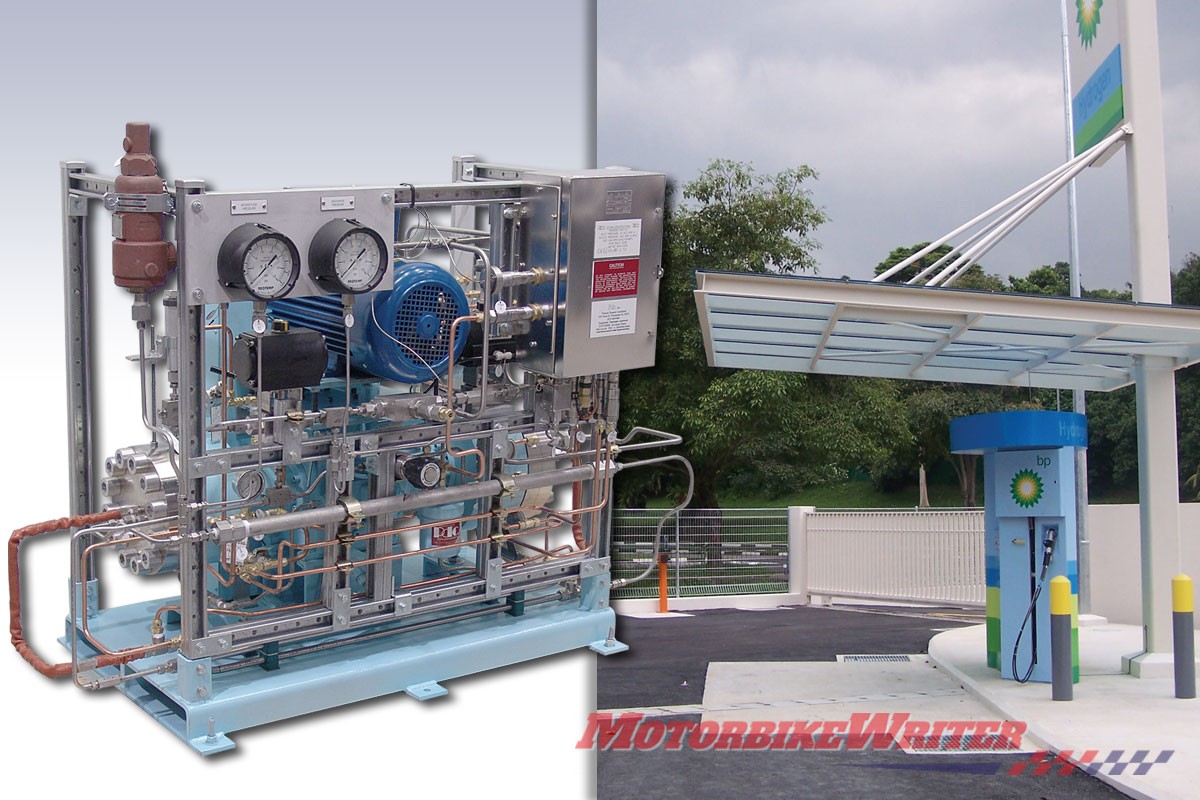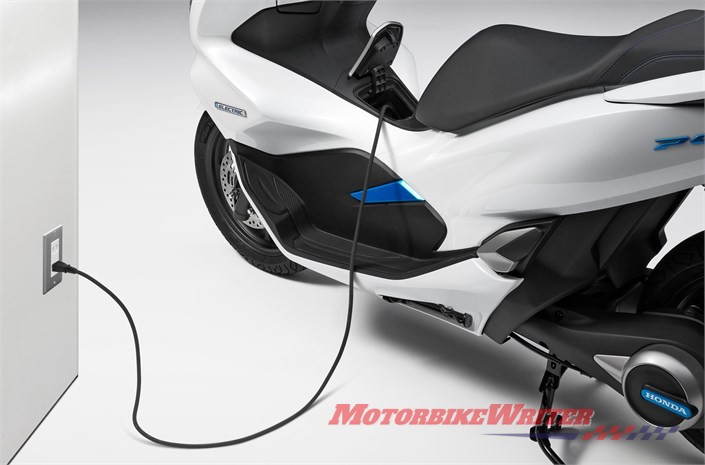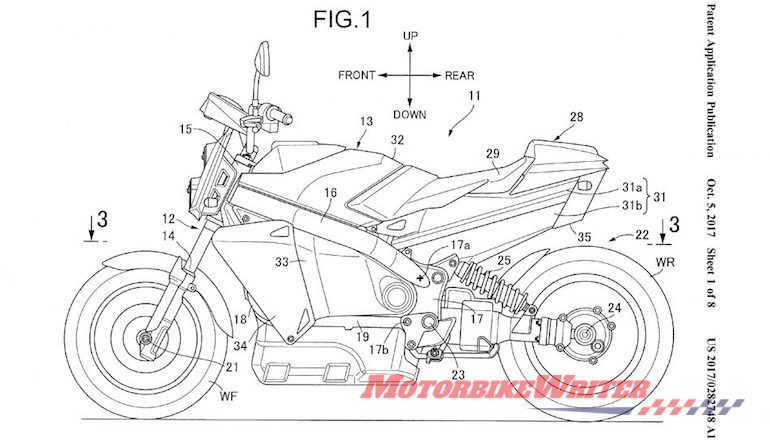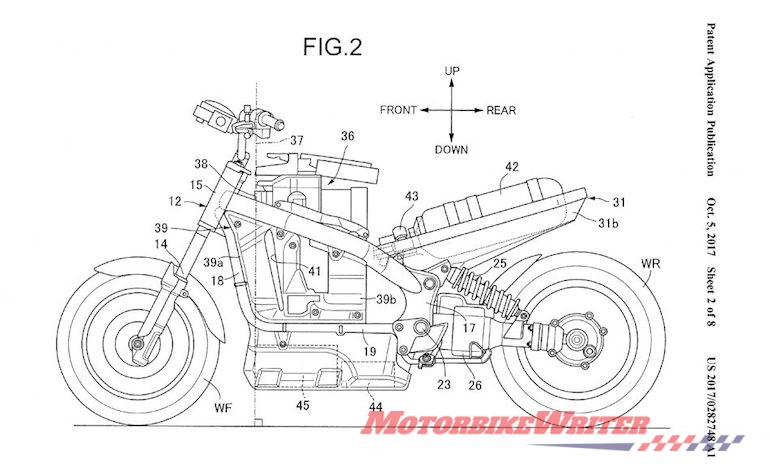Honda is forging ahead with plans for hydrogen fuel-cell motorcycles.
A patent for the design which was submitted in late 2017 has just been made public.
The design shows a rather conventional bike from the outside with a perimeter frame, telescopic forks and shaft drive.
However, and the seat is a hydrogen gas tank and an electric motor.
Honda has been in the news recently with other motorcycle patents including a cooling/heating seat and a leaning three-wheeler.
These may seem fanciful, but Honda has always been at the forefront of technology.
Hydrogen fuel cells
The Japanese company started working on fuel cell cars more than a decade ago with the Clarity FCX.
Fuel cells work by burning hydrogen and oxygen to create heat and produce electricity for the motor. The only emissions are water vapour.
Hydrogen power has been limited worldwide by the lack of filling stations, but the technology is supported by several auto manufacturers.

Many believe it is a superior alternative to electricity which often comes from polluting coal-fired power plants. There is also the problem of how to dispose of used batteries.
While it takes hours to recharge an electric vehicle, hydrogen fuel cells can be refuelled in the same time as a petrol vehicle.
However, there is some resistance to fuel cells over safety issues of transporting and storing the volatile gas as well as the costs of its production from water by electrolysis.
So far, this resistance has limited the number of hydrogen flying stations. However, Honda is working on the technology with Toyota and Nissan who plan to open their own hydrogen filling stations.
Honda is also hedging its bets on future power sources with hybrid and electric motorcycles in the interim.

Honda made its first petrol-electric hybrid car in 1999 and has produced many electric concepts over the years. They also back the Mugen electric TT race bike.



